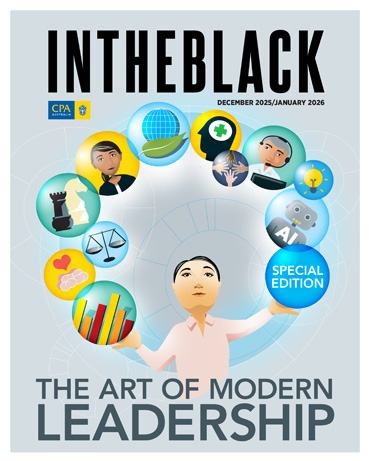Loading component...
At a glance
Digital presenteeism refers to the pressure to be constantly visible and active online, especially in remote or hybrid work settings, even when it is unnecessary, unproductive or detrimental to staff wellbeing.
Digital presenteeism can include things like attending excessive online meetings, replying to messages immediately or at any time and ensuring online statuses are “green” to demonstrate presence. These behaviours are often driven by a fear of being perceived as disengaged or unproductive.
“It is the digital-age counterpart of traditional presenteeism, where employees feel obliged to be physically present at work, even when they are sick or burnt out,” says Dr Siew-Fang Law, co-author of The Power of Care.
“The difference is that now presenteeism manifests through screens and connectivity.”
If a culture of digital presenteeism is left unchecked, the consequences can include lower staff morale, disengagement and higher turnover. Like many aspects of good management, improvement starts with leaders.
1. Address leader mindsets
If digital presenteeism is stopping workplace productivity, the first step is to address leader mindsets and underlying beliefs about productivity and visibility. This will help shift their potential fear of losing control.
“Through conscious reflection, organisations can begin to prioritise outcomes over presence. A principle of action should guide [leaders] to implement performance frameworks that measure results and deliverables, rather than screen time or meeting participation,” Law says.
Importantly, leaders should actively model healthy behaviours to empower employees to follow suit.
“Incorporate mental health into everyday workflows, such as starting meetings with wellbeing check-ins or including scheduled recharge periods in team calendars.”
2. Structure roles thoughtfully
Psychologist John Cooksey, who runs consultancy firm Confident Performance, says role structure is key to preventing digital presenteeism.
“Have clear goals, and when people are working in project teams make sure roles are well defined, and that staff know what they are trying to achieve and how they need to manage their time to get the job done,” he says.
This extends to having clear deliverables and working hours. “If this is done well, there is less of a requirement to actively monitor people because they’re achieving what’s required,” Cooksey notes.
3. Connect with teams in a meaningful way
This is a key element of being an effective leader, whether heading up a project team, an initiative or as a line manager.
“It’s about consciously taking the time to make sure your team understands that you know what they are doing and that you trust them,” Cooksey says.
“It’s important to develop staff so they can do their job, and so you know enough about them to talk to them about things that are beyond their job.”
4. Schedule time offline in the working day
Actively insert periods of time into the working day when technology is not required.
“Consider shutting down the email system at the end of the day. Start by doing this two days a week so team members, and more importantly, managers, get used to it,” Cooksey says.
Prioritising connection as a manager is also essential. “Organise lunch for the team, call people rather than sending an email and have walking meetings — even when you’re not physically together.”
5. Use tech for trust, not tracking
Technology is not the enemy, but surveillance is, according to Dr Ben Hamer, chief futurist with futures design studio, ThinkerTank.
“In the next decade, the divide will grow between organisations that use artificial intelligence to empower people and those that use it to watch them,” Hamer says. “Trust beats tracking.”
This means replacing an “online equals productive” culture with clear, measurable deliverables.
“There’s an opportunity to incentivise deep work, not fast responses, with response time expectations a leading cause of tech fatigue,” Hamer says.
Promoting psychological safety in the workplace is also essential, with Hamer’s research showing 64 per cent of Australians want to spend less time online. Yet many workers feel like they cannot unplug without career consequences.
Looking ahead
Unless it is addressed, digital presenteeism can stifle workplace productivity — an important precursor for growth.“Presenteeism promotes risk aversion with people avoiding creative thinking to appear busy. This could impact innovation by people taking fewer risks or big leaps,” Hamer suggests.
“Innovation doesn’t happen in inboxes. If presenteeism persists, creativity stalls, burnout spikes and your best people walk out the door with their boldest ideas still in their heads,” he says.
“It’s important to remember that ‘online’ doesn’t equal output. Real productivity reform will come when we design work to reward outcomes, not optics. Leaders lead by logging off.”

